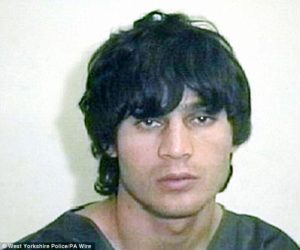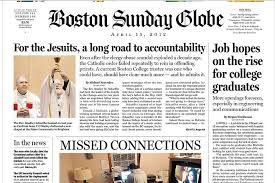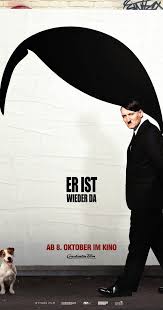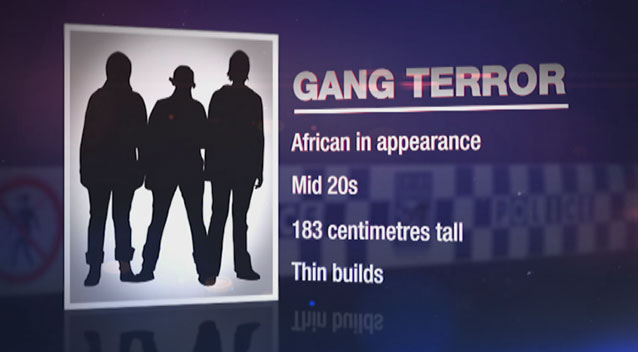Sunshine Hate: Liberal Responses to the Orlando Vibrancy
/63 Comments/in Featured Articles, Liberalism/by Tobias LangdonAs H.P. Lovecraft nearly said, the most risible thing in the world is the inability of the Guardian to correlate its own contents. Like the Charlie Hebdo massacre, the Orlando massacre has been a deeply traumatic event for the Guardian and its readers. An oppressed Muslim has done bad things to people who matter — not worthless “white trash” girls in Rotherham, but precious members of the LGBTQ community.

Vibrant Afghan #1: Omar Mateen
How could this happen? How could one liberal pet turn on another like that? In Guardianista hagiology, the LGBTQ community and the Muslim community are even more sacred than the left-wing cartoonists who died at Charlie Hebdo who, after all, were mainly White. But the Guardian already contained a story explaining the behaviour of Omar Mateen, the “Afghan-American” responsible for the massacre in Orlando. Britain too has seen how vigorously Afghan males can vibrate when they put their minds to it, as in the gruesome double murder of two White girls by Ahmad Otak, a refugee from Afghanistan (‘We record all the killing of women by men. You see a pattern’, The Guardian, 8th February 2015)

Vibrant Afghan #2: Ahmad Otak
Otak was armed only with a knife. Imagine what he could have achieved if, like Omar Mateen, he’d been able to get hold of a gun. Mateen was described by his first wife as violent and mentally unstable. In other words, he was a typical Afghan male. Afghanistan is full of clans, blood-feuds and in-breeding. Its culture is summed up by this famous Bedouin saying: “I against my brother; I and my brother against my cousin; I, my brother and my cousin against the world.” Read more
Spotlight on double standards at the Boston Globe
/61 Comments/in Featured Articles, Media Bias/by Francis Carr Begbie When sex scandals involving Woody Allan, Roman Polanski and various Hollywood child stars bubbled to the surface again recently it was almost a certainty that they would quickly die away with nothing resolved. Outside the briefest news reports there seems to be a total lack of will for investigating these subjects thoroughly.
When sex scandals involving Woody Allan, Roman Polanski and various Hollywood child stars bubbled to the surface again recently it was almost a certainty that they would quickly die away with nothing resolved. Outside the briefest news reports there seems to be a total lack of will for investigating these subjects thoroughly.
But there are some stories of institutional child abuse for which there seems no lack of enthusiasm, such as by Catholic priests. And you don’t have to be Catholic to wonder why this is.
The announcement of Best Picture at the 2015 Oscar ceremony caused a huge surprise — for the winner was Spotlight, a slow newspaper procedural which had been a poor box-office performer compared to the joint favourites, The Revenant and The Big Short.
Spotlight told the story of how the Boston Globe’s investigative reporter team exposed how the Catholic Church in Boston had been covering up for child abusing priests for decades. The long series of articles began on January 6, 2002. The resulting newspaper campaign was one of the biggest in American journalism in recent years, averaging out at two and a half items per day. Read more
Rezension von Daniel Jonah Goldhagens „Das Böse stirbt nie aus”, Teil 1
/in Translations: German/by Brenton Sanderson19 Juni 2015
Original English version: “A Review of The Devil That Never Dies” by Daniel Jonah Goldhagen, Part 1, by Brenton Sanderson, originally posted June 19, 2015.
Daniel Jonah Goldhagen ist am besten bekannt für sein 1996 erschienenes Buch Hitlers Willige Vollstrecker: Ganz gewöhnliche Deutsche und der Holocaust. Trotz einer mangelhaften Geschichtsschreibung weckte dieses polemische Werk ein riesiges Medieninteresse und begründete seinen Ruf als vermeintliche Autorität in den Bereichen „Antisemitismus” und dem „Holocaust.” Schnell konnte er mit seiner extremen Variante jüdischer Apologetik in der New York Times, der Los Angeles Times, der Washington Post, der New Republic und anderen jüdisch-kontrollierten Presseorganen weltweit hausieren gehen.
Als ehemaliger Assistenzprofessor für Politikwissenschaft und Soziologie an der Harvard-Universität hat Goldhagen seitdem weitere Bücher produziert, in denen er Europäer wegen ihres hartnäckigen „Antisemitismus” und ihrer angeblich enthusiastischen Beteiligung am „Holocaust” moralisch anklagt. Darunter befinden sich Die katholische Kirche und der Holocaust. Eine Untersuchung in Schuld und Sühne (2003) und Schlimmer als Krieg: Wie Völkermord entsteht und er zu verhindern ist (2009). 2013 wurde Das Böse stirbt nie aus: Der Aufstieg des globalen Antisemitismus von einem bedeutenden kommerziellen Verleger veröffentlicht und als „eine bahnbrechende —und furchteinflößende— Untersuchung über das weitverbreitete Wiedererwachen des Antisemitismus im 21. Jahrhundert” angepriesen. Read more
Creating a White Future
/39 Comments/in Featured Articles, White Racial Consciousness and Advocacy/by Robert S. Griffin, Ph.D. For its fourth anniversary issue in the fall of 2016, Le Harfang, a French Canadian white nationalist publication, invited foreign contributions from a number of people, including me as an American. We were tasked with producing an article that 1) speaks to how the contributor sees the world for white people “in four or forty years,” and 2) offers advice on how to prepare for tomorrow’s world. Length was up to me, and Le Harfang’s editor would trim what I wrote if need be as he translates my English into French. I replied that I’d give it a go. This writing shares my response to the Le Harfang charge with an English speaking audience.
For its fourth anniversary issue in the fall of 2016, Le Harfang, a French Canadian white nationalist publication, invited foreign contributions from a number of people, including me as an American. We were tasked with producing an article that 1) speaks to how the contributor sees the world for white people “in four or forty years,” and 2) offers advice on how to prepare for tomorrow’s world. Length was up to me, and Le Harfang’s editor would trim what I wrote if need be as he translates my English into French. I replied that I’d give it a go. This writing shares my response to the Le Harfang charge with an English speaking audience.
I’ve concluded that speculating about what the future holds for white people wouldn’t be the best approach for me to take in this writing. Rather, the focus here will be on the process of getting to the future, creating it. I want to underscore that whatever the future turns out to be will have been shaped by what people did in the past — that is to say, now. Not knew in the past (now). Not favored in the past. Not hoped for in the past. Did in the past.
Indeed, as philosopher Richard Weaver famously (at least in intellectual circles) pointed out, ideas have consequences, including ideas about the future.1 But those ideas have consequences only to the extent that they result in and direct behavior. Actions, conduct — large and small scale, collective and individual — change the world now and down the line, including after our passing. Anything I offer here will be meaningful and valuable only to the extent that it gives impetus and guidance to actions in today’s present, which will in a cause-and-effect way influence tomorrow’s present. (The future never exists as a tangible, experienced reality; we always live in the present.) Read more
Er Ist Wieder Da: The Joke is on You
/41 Comments/in Featured Articles, The Arts and Culture/by M. Jaggers In this humorous film about Hitler’s return to modern-day Berlin, Er ist Wieder Da (English title: Look Who’s Back), Germans are caught on camera saying true things about Germany that are not what our elites want to hear. And it happens in the current year. They are so desperate to speak the truth that they are even willing to do so to an actor playing Hitler, Oliver Masucci (Italian and German heritage). This is remarkable, and it speaks to the desperation of German society. There must be such an infinite longing when one cannot dare utter the most commonsensical social observation, without reasonable fear of prosecution or at least censorship; and then to proclaim it for a film crew! It is ironic, and yet also somehow poetic. One cannot whisper the truth, yet one may broadcast it for millions, so long as they are willing to be cast as the fool in a masque of Cultural Marxism; a fool in the Shakespearean sense, which is to say, one who utters unspeakable truisms to an otherwise intolerant authority.
In this humorous film about Hitler’s return to modern-day Berlin, Er ist Wieder Da (English title: Look Who’s Back), Germans are caught on camera saying true things about Germany that are not what our elites want to hear. And it happens in the current year. They are so desperate to speak the truth that they are even willing to do so to an actor playing Hitler, Oliver Masucci (Italian and German heritage). This is remarkable, and it speaks to the desperation of German society. There must be such an infinite longing when one cannot dare utter the most commonsensical social observation, without reasonable fear of prosecution or at least censorship; and then to proclaim it for a film crew! It is ironic, and yet also somehow poetic. One cannot whisper the truth, yet one may broadcast it for millions, so long as they are willing to be cast as the fool in a masque of Cultural Marxism; a fool in the Shakespearean sense, which is to say, one who utters unspeakable truisms to an otherwise intolerant authority.
At times the viewer may cringe, insofar as these civilians are being made fun of, but also the viewer may exalt, in that there is man and frau in Deutschland still capable of rational thought. Likewise, the character Hitler is capable of speaking to taboo themes in film that would not otherwise be permitted in that diversity-whipped country. As Gavriel Rosenfield notes in his review of the 2011 bestselling novel on which the film is based, it risks “glamorizing what it means to condemn”: readers can “laugh not merely at Hitler, but also with him.” One may call it artistic license, but in any case, it does make for interesting art. Read more
The Jewish War on White Australia: Refugee Policy and the African Crime Plague, Part 3
/27 Comments/in Featured Articles, Jewish Support for Multiculturalism/by Brenton Sanderson
From a television news report following the Moomba riots
Australia’s elites double-down on the multicult
Despite the trail of traumatized victims left behind by Australia’s (still comparatively small) African population, the country’s Jewish-dominated intellectual and media establishment have scorned all doubters and doubled down in their monomaniacal (essentially theological) commitment to the virtues of mass non-White immigration and multiculturalism. Australians must open their hearts, minds (and especially their borders) to everyone in the whole world because, rampant non-White criminality, terrorist threats, welfare dependency and White displacement aside, “the lived experience of decades since the White Australia policy was abandoned has been overwhelmingly positive.”
The African crime epidemic, rather than representing a calamitous failure of immigration and refugee policy, is instead dismissed as “a calamitous law enforcement failure.” Thus, White police are held to be ultimately responsible for Black criminality. Instead of arguing for an urgent review of Australia’s immigration and refugee policies, Jewish state MP David Southwick has instead urged the Victorian government to fund more frontline police to tackle the exponential rise in violent crime. Rather than ascribing higher rates of African offending to innate racial traits observable across all times and places, the crime writer for The Age, Cameron Houston, attributes the phenomenon to “social disadvantage, domestic dysfunction, poor employment prospects, addiction issues, or just plain old fashioned boredom.” White Australians therefore need to do more “to get these kids involved in their local communities and improve their prospects.” Read more




